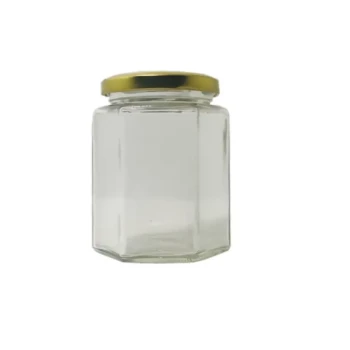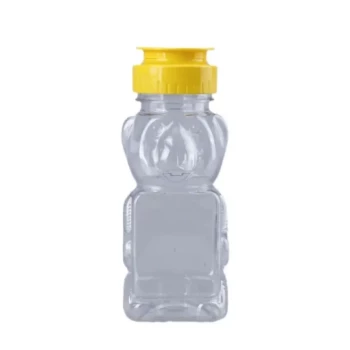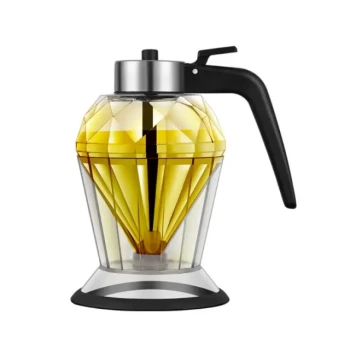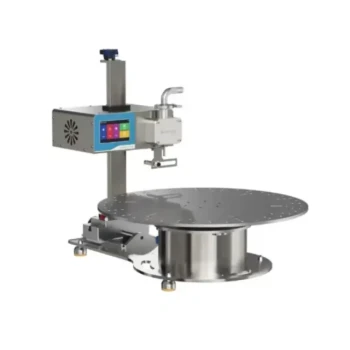The most common types of packaging for honey are glass jars, plastic bottles (including squeeze bottles), flexible pouches or sachets, and tubes. The choice of container is a critical decision that balances product protection, branding, cost, and consumer convenience.
Choosing the right honey packaging is not just about the container; it's a strategic choice that communicates your brand's value, impacts your shipping costs, and defines how your customer will ultimately experience the product.

A Breakdown of Common Honey Packaging
Each packaging type serves a distinct purpose, from conveying a premium image to offering on-the-go convenience. Understanding these options is the first step in matching your product to the right market.
Glass Jars: The Premium Standard
Glass is the classic choice for honey, often preferred for artisanal or high-end brands. Its transparency beautifully showcases the honey's color and clarity.
This material is inert, meaning it won't interact with the honey, perfectly preserving its natural flavor and aroma. A common style, the "queenline" jar, is specifically associated with honey and signals quality to consumers.
Plastic Bottles: The Versatile Workhorse
Plastic containers are valued for their versatility, durability, and lower cost compared to glass. They are significantly lighter, which reduces shipping expenses.
Because they are shatter-resistant, plastic bottles are a practical option for a wide range of retail and distribution channels, from large supermarkets to local markets.
Squeeze Bottles & Tubes: Prioritizing Convenience
Squeeze bottles are a subcategory of plastic containers designed specifically for user-friendly dispensing. This format is incredibly popular for its clean, no-mess application.
Tubes function similarly, often used for smaller or specialty portions. Both options appeal directly to consumers who value convenience and ease of use in the kitchen.
Pouches & Sachets: For Portability and Single Servings
Flexible packaging like pouches and sachets is the ideal solution for single-serving or on-the-go use. They are extremely lightweight and offer a high degree of customizability for branding.
This format is common in the food service industry, for sample distribution, or for inclusion in meal kits where portion control and portability are essential.
Understanding the Trade-offs
Selecting a package isn't just about aesthetics; it involves balancing competing factors like cost, durability, and consumer perception.
Perception vs. Practicality
The core trade-off often lies between glass and plastic. Glass offers a superior, premium perception but comes with higher costs, greater weight, and the risk of breakage during transport.
Plastic offers immense practical benefits in durability and cost-effectiveness but may not convey the same artisanal quality as a heavy glass jar.
Product Protection and Shelf Life
Proper packaging is your primary defense against spoilage. The container must provide a reliable seal to protect the honey from environmental factors like moisture and contaminants.
A good seal is crucial for retaining the honey's delicate aroma and natural flavor over its long shelf life.
The Sustainability Factor
Consumer demand for eco-friendly options is a growing consideration. Both glass and many types of plastic are recyclable.
Producers are increasingly evaluating the environmental impact of their choices, considering not just the material itself but also the energy required for its production and transport.
Making the Right Choice for Your Goal
Your packaging choice should be a direct reflection of your brand, your target customer, and your business goals.
- If your primary focus is an artisanal, high-end brand: Choose glass jars to communicate premium quality and preserve the purest flavor.
- If your primary focus is convenience for family use: Select plastic squeeze bottles for their ease of use and no-mess dispensing.
- If your primary focus is cost-effective, large-scale distribution: Standard plastic jars and bottles offer the best balance of durability, low weight, and affordability.
- If your primary focus is food service or on-the-go consumers: Use flexible pouches and sachets for portability and single-serving efficiency.
Ultimately, the best packaging is an extension of your product, protecting its quality while clearly communicating its value to the world.
Summary Table:
| Packaging Type | Best For | Key Characteristics |
|---|---|---|
| Glass Jars | Premium & Artisanal Brands | Premium perception, inert material, preserves flavor, heavier. |
| Plastic Bottles | Cost-Effective Distribution | Lightweight, durable, shatter-resistant, lower cost. |
| Squeeze Bottles & Tubes | Consumer Convenience | Easy, no-mess dispensing, user-friendly, great for family use. |
| Pouches & Sachets | Portability & Single Servings | Extremely lightweight, customizable, ideal for food service/samples. |
Ready to package your honey for success?
As a leading wholesale supplier to commercial apiaries and distributors, HONESTBEE provides the durable, high-quality packaging solutions you need to scale your operation. We help you balance cost, protection, and branding to meet your specific market demands.
Contact our packaging experts today to discuss bulk pricing and find the perfect containers for your honey.
Visual Guide
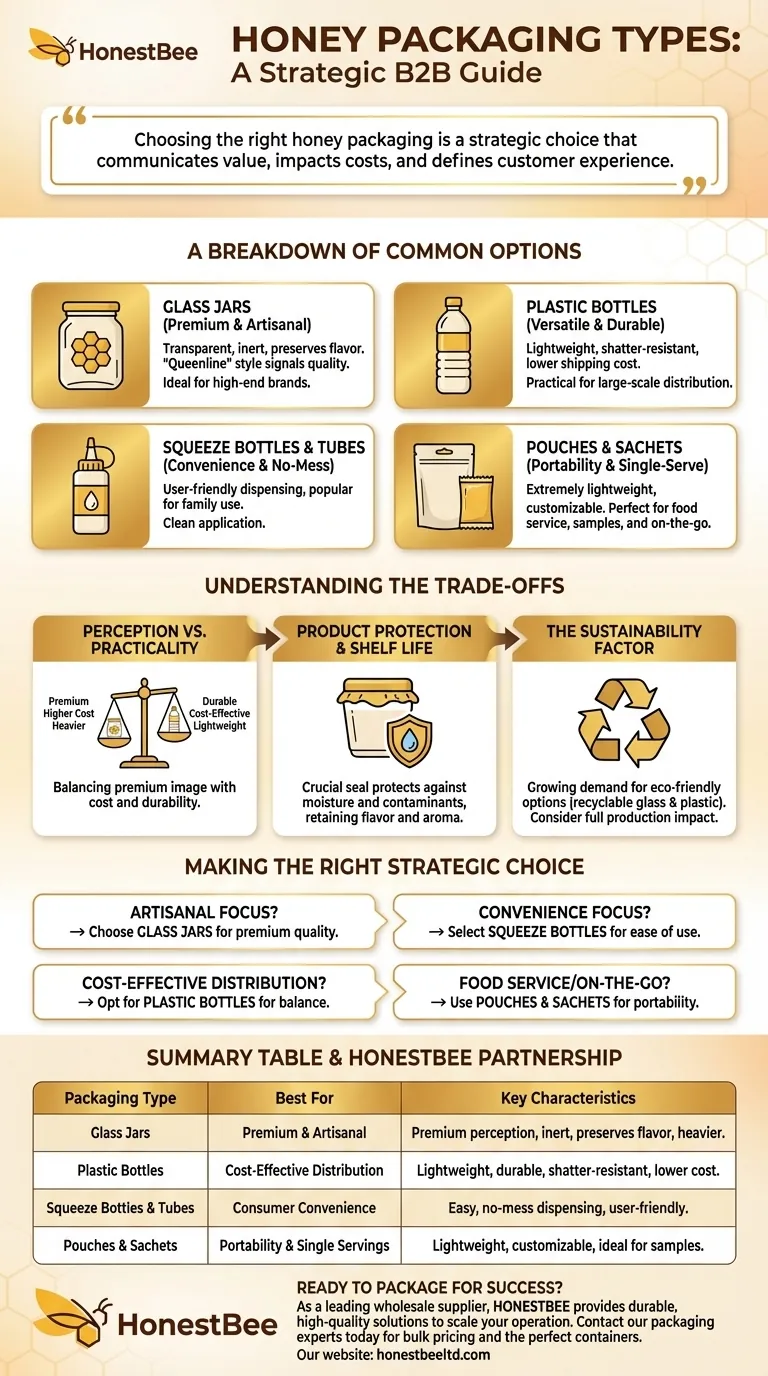
Related Products
- Hexagonal Glass Honey Jars with Metal Lug Caps Elegant Versatile Packaging
- Classic Drum Shaped Glass Honey Jar with Airtight Lid
- Classic Honey Bear Jars with Flip Top Dispensing Cap for Liquid Sweeteners
- Inverted Squeezable Honey Jar with No Drip Flip Top Cap for Easy Pouring
- Pneumatic Double Nozzle Honey Filling Bottling Packaging Machine
People Also Ask
- What is the term for honey can absorb moisture from the air? Understanding Hygroscopy
- What makes raw honey more aesthetically appealing than processed honey? Discover the Beauty of Authenticity
- How should honey be stored and packaged? Preserve Flavor & Quality with Proper Containers
- How many jars of honey do you get from a hive? Unlock Sustainable Harvesting Secrets
- What factors should be considered when choosing honey packaging? Optimize for Brand, Operations & Market
